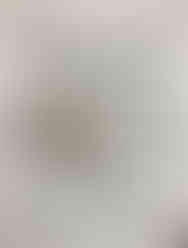Freedom to Attribute Meaning
- Georgina Maddox

- Sep 13, 2022
- 4 min read
by Georgina Maddox
'Pareidolia: songs of (dis)belief' asks the viewer to shed preconceived notions and navigate
Jahangir Asgar Jani’s watercolours
Jehangir Asgar Jani’s current body of work as showcased in his ongoing exhibition at Latitude 28, and curated by Aparna Andhare, is rich with many meanings and yet there is something deeply personal and enigmatic about the imagery. Jani’s watercolours are not to be deciphered with a single lens. Take for instance the Verse 18 image of a large hand, facing the viewer, where the ‘life line’ and the other lines are occupied by a set of images. At the tips of the fingers appear a series of five circular shapes, one for each finger. They may be imprints, or may be read as celestial objects, the moon perhaps. Right under this is the shadowy outline of a horse. The animal appears to be balanced on a sword. Below that a set of vacant buildings appear and finally we find that the hand is mounted on a pedestal, much like one of Jani’s sculptures. A bird flies up in the sky that appears as a free element escaped from the confines of the sculpture.

Verse 18, Watercolour on paper, 26 inches x 20 inches, 2022
Now if one were to attempt to read this image and attribute to it one’s own interpretations, one could say that over time the performing horse that is balanced on a sword longs to escape the confines of civilization like the bird that can take to the sky and experience complete freedom, even for the briefest of moments. It is a freedom that is hard to match.
“There’s no inherent meaning within any object, any image, any situation. We construct meaning so we can sleep at night and wake up the next day and live our lives,” says artist Jani passionately. One has to agree with him because it is true that we are the attributors of meaning to the world we live in and our understanding of it can be different according to our gender, religion, caste, language and region of origin.
Unravelling the title ‘Pareidolia: songs of (dis)belief’, we discover that Jani is really questioning the idea of (dis)belief in all spheres: “Having grown up with beliefs I find everything that I have been taught is very restrictive – it is to curb your innocence and make you ‘acceptable’ to society. This comes to me as I question my own beliefs,” says Jani, adding, “The Arabic script is given to us as sacred but we don’t fully understand half the things that are taught to us. In fact the same could be said for Latin that is followed by the Christians, or Sanskrit that is charted by the Hindus. This is because we have not created ‘new ways of existing’. Often ‘believers’ have created the biggest atrocities, if we look at the crusades, or the practice of ‘Jihad’, or what right-wing Hindus are currently engaged in, one would find that it is people call themselves believers who are behind the violence. The believers don’t have a concrete fact to believe so they construct and imagine beliefs that suit their own geo-political ideologies. In one way people have to unlearn belief and begin afresh,” says Jani.
Verse 1 - 18, Watercolour on paper, 26 inches x 20 inches each, 2022
Taking this into consideration we can agree that some objects, situations and in this instance art, is understood ‘by instinct’, while others are ‘learned comprehension’. There are symbols that are instantly recognizable, but do they always mean what you think they mean? Just as all cyphers cannot be cracked with a singular code, perhaps this search for meaning lies in the past, in the depths of memory, or in the folds of time? That is, if one believes in meaning at all.
Te Aveel 1 - 9, Watercolour on Arches paper, 15 inches x 11 inches each, 2014
The small format watercolours are the artist’s break from creating sculptures, it has allowed Jani to play with light, and create works that seem fluid and ‘ephemeral’. The sharp confidence of each line is diffused by the pale translucence of watercolours. However, each image reveals a grid which gives the work a robust structure. Thus framed, but not constrained, calligraphy and architectural form overlap, and around them, birds fly, soaring and diving, unrestrained. Perhaps messengers or symbols of the soul or simply a visual device to draw the eye, the interpretation of birds depends on the viewer’s own structures of belief/disbelief.
“A persistent memory shapes our futures. I am trying to arrive at some clarity by iterating the memory with the multiples of what looks like the same work. However, the persistence has created its own rhythm and cadence. Each element echoes an altered sound, tantalizingly close to establishing a meaning and yet defying definition,” concludes Jani.
At Latitude 28, New Delhi, on till 25 September 2022

Georgina Maddox is an independent critic-curator with almost two decades of experience in the field of Indian art and culture. She was assistant editor at India Today’s Mail Today and senior arts writer for the Indian Express and the Times of India. She is currently working in the media as an independent critic for various publications and has published articles in Open Magazine, India Today, Harper’s Bazaar, Vogue and also in Elle Magazine, The Hindu and Business Line, Sunday Magazine BLINK, TAKE on Art, Time Out, and online with US based E-magazine, Studio International, STIR world and MASH Mag.


























































Comments